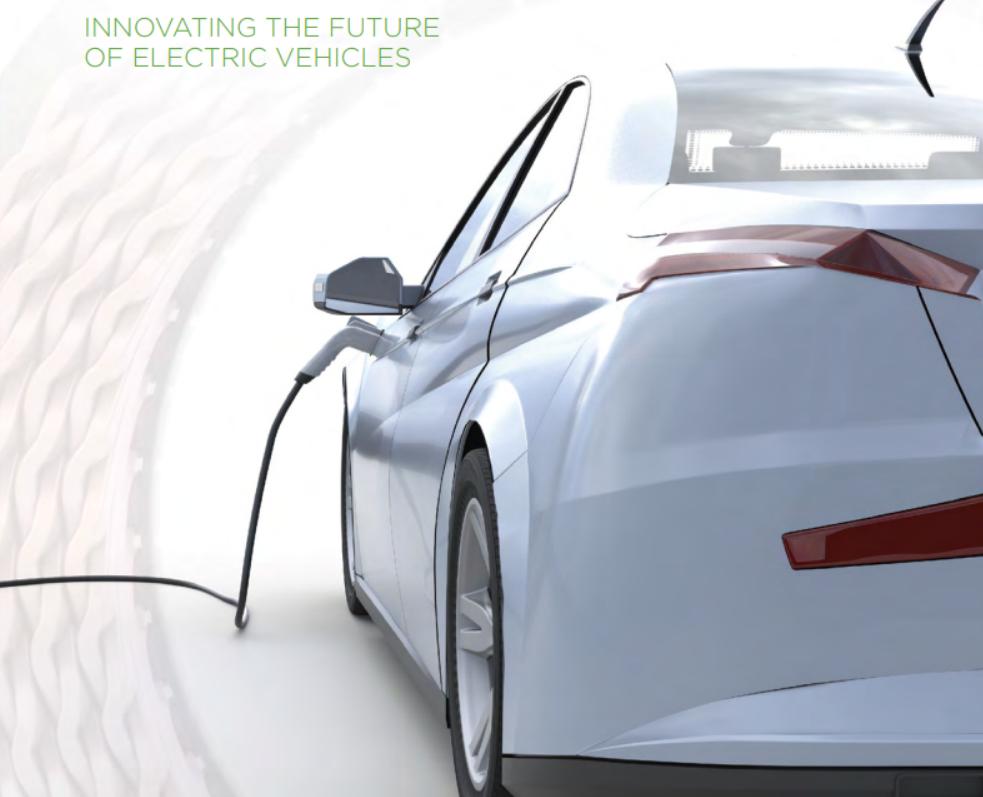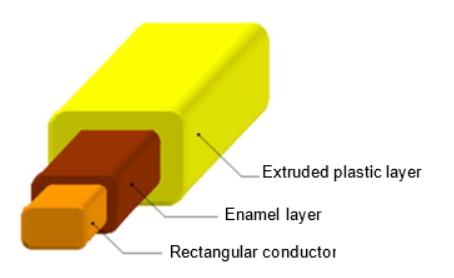Due to the development and popularization of hybrid vehicles and electric vehicles, the demand for driving motors carried by electric vehicles will continue to increase in the future. In response to this global demand, many companies have also developed flat enameled wire products.
Electric motors are widely used in industry, with a wide power coverage range and many types. However, due to the higher requirements of new energy vehicles on drive motors in terms of power, torque, volume, quality, heat dissipation, etc., compared to industrial motors, new energy vehicles must have better performance, such as small size to adapt to the limited internal space of the vehicle, wide working temperature range (-40~1050C), adaptability to unstable working environments, high reliability to ensure the safety of the vehicle and passengers, High power density provides good acceleration performance (1.0-1.5kW/kg), so there are relatively few types of drive motors, and the power coverage is relatively narrow, resulting in a relatively concentrated product.
Why is “flat wire” technology an inevitable trend? One key reason is that the policy requires a significant increase in the power density of the driving motor. From a policy perspective, the 13th Five Year Plan proposes that the peak power density of new energy vehicle drive motors should reach 4kw/kg, which is at the product level. From the perspective of the entire industry, the current product level in China is between 3.2-3.3kW/kg, so there is still 30% room for improvement.
To achieve an increase in power density, it is necessary to adopt “flat wire motor” technology, which means the industry has already formed a consensus on the trend of “flat wire motor”. The fundamental reason is still the huge potential of flat wire technology.
Famous foreign car companies have already used flat wires on their drive motors. For example:
·In 2007, Chevrolet VOLT adopted the technology of Hair Pin (hairpin flat wire motor), with supplier Remy (acquired by component giant Borg Warner in 2015).
·In 2013, Nissan used flat wire motors on electric vehicles, with supplier HITACHI.
·In 2015, Toyota released the fourth generation Prius using a flat wire motor from Denso (Japan Electric Equipment).
At present, the cross-sectional shape of enameled wire is mostly circular, but circular enameled wire has the disadvantage of low slot filling rate after winding, which greatly limits the effectiveness of corresponding electrical components. Generally, after full load winding, the slot filling rate of enameled wire is about 78%. Therefore, it is difficult to meet the requirements of technological development for flat, lightweight, low-power, and high-performance components. With the evolution of technology, flat enameled wires have emerged.
Flat enameled wire is a type of enameled wire, which is a winding wire made of oxygen free copper or electrical aluminum rods that are drawn, extruded, or rolled by a certain specification of mold, and then coated with insulation paint multiple times. The thickness ranges from 0.025mm to 2mm, and the width is generally less than 5mm, with a width to thickness ratio ranging from 2:1 to 50:1.
Flat enameled wires are widely used, especially in the windings of various electrical equipment such as telecommunications equipment, transformers, motors, and generators.
Post time: May-17-2023

